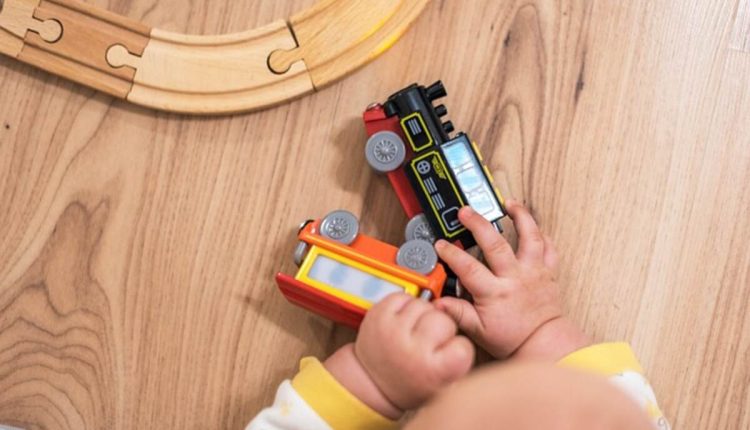This article provides a step-by-step guide for installing wood flooring in your home. Installing a hardwood floor is comparable to installing laminate flooring (see my other article for details), with a few key distinctions. Don’t be shy about asking a more seasoned buddy for assistance if you’re unsure how to lay wood flooring or your degree of DIY expertise. Thanks to technological advances, wood flooring is now easy to install and of excellent quality.
Before you begin following our how-to lay wood flooring guide, ensure your wood flooring has been exposed to the space in which it will be installed for at least 48 hours. Because wood is a natural substance, the boards need time to adjust to the humidity and temperature of the space where they will be installed. The boards will swell or shrink as necessary to accommodate their new surroundings. It’s also essential to clean the subfloor before installing the wood flooring to eliminate any dirt or other particles that could cause issues later on.
Let’s get going with the first step of our wood flooring installation tutorial:
Equipment is the first step.
a circular saw, band saw, or other electric saw
grout separators
eye protection
Knee pads, a square, and a hammer
materials: masking tape, craft knife, tapping block, and pulling bar
Adhesive-backed underlayment
Wood floor measurements: the second step
To determine how much wood flooring you’ll need for your project, measure the total square footage of the area that will be floored. Box sizes for wood flooring vary by species and style, yet they always include helpful information like board measurements and total coverage per box. You’ll need to measure the length and width of your space to determine how many wood flooring packs you’ll need for your job. The area can be calculated by multiplying the two sets of numbers together. Measuring the area of an awkward room might be tricky, but you can get around this by first dividing the room into smaller, square-shaped sections and then adding the areas of these sections together. Take the square footage of the room (in the same units used on the wood flooring packaging) and divide it by the square footage covered by a single pack of wood boards to determine how many packs of wood flooring you will need.
It is strongly suggested that you purchase ten percent more boards than you estimate you will need for your project. If you make a mistake or get your measurements off and are in the middle of a project, you won’t be left without enough boards to finish.
Step 3: Outline your wooden floor.
When laying a wood floor, unlike tiling, it is not necessary to measure and record the location of each board. However, before placing the self-adhesive underlay, you should try laying a test row. This will help you figure out where in the room to start laying the floor and how much of the boards must be trimmed at the end of each row. Wood flooring installation is best in the area with the most natural light. Try not to design your space in a way that will necessitate end-of-row board depth reductions of more than 50 percent or width reductions of less than 400 millimeters.
Fourth, install an adhesive underlayment.
In this video, we’ll learn how to install a floating floor. As a result, the new wood flooring is not physically attached to the existing subfloor. This method of installing wood flooring is widely used because it is simple, quick, and completely reliable. Keep the glossy side up as you lay your underlayment. This is because the glue is located on the shiny side. To keep the seams in the underlay from ever lining up with the joins in the wood flooring, you should use spacers and lay the rolls at a 90-degree angle to where you would lay the laminate boards. Ensure there are no overlapping or gaps in the underlay as you lay it since this could cause the wood planks to sag or rise unevenly. The desired result is a smooth, uniform coating. Masking tape can be used to secure the seams between the different parts.
Fifth, the wood flooring is laid.
Start by cutting away a part of the underlay’s protective film, about half the width of a wood board, using the arrangement you set beforehand. Ensure your spacers are still in position, and then carefully set your first board in place. Once you get the first board where you want it, you can remove the remaining protective film to expose it to the glue. The same method can be used to remove the sticky film from the rest of the room.
The most common type of wood flooring installation is a tongue and groove. As you drop each new board into place, you can link them together by presenting them at a 45-degree angle and sliding them into place. If the boards still aren’t staying put, use your beating block or pull the bar to give them a little extra nudge.
You can use the supplied saw to make the necessary cut to the end of the row once you have marked the board. Using the correct saw for the job is essential, as splintering can occur on the top or bottom of the board if you’re not careful. Wear protective eyewear when you do this.
Step 6: Add the Final Touches
Flooring should be given at least 48 hours to cure before any trims or scotias are installed. The floor can then settle into its intended position.
Trims and scotias can be cut at an angle using a miter box. You can install transition bars where your new floor meets an existing one or a doorway.
Congratulations! You have successfully learned the art of installing wood flooring.
If you need help installing hardwood floors, Topps Tiles is the place to go.
Read also: Automobile Financing Tips When Buying a Fresh Car.


